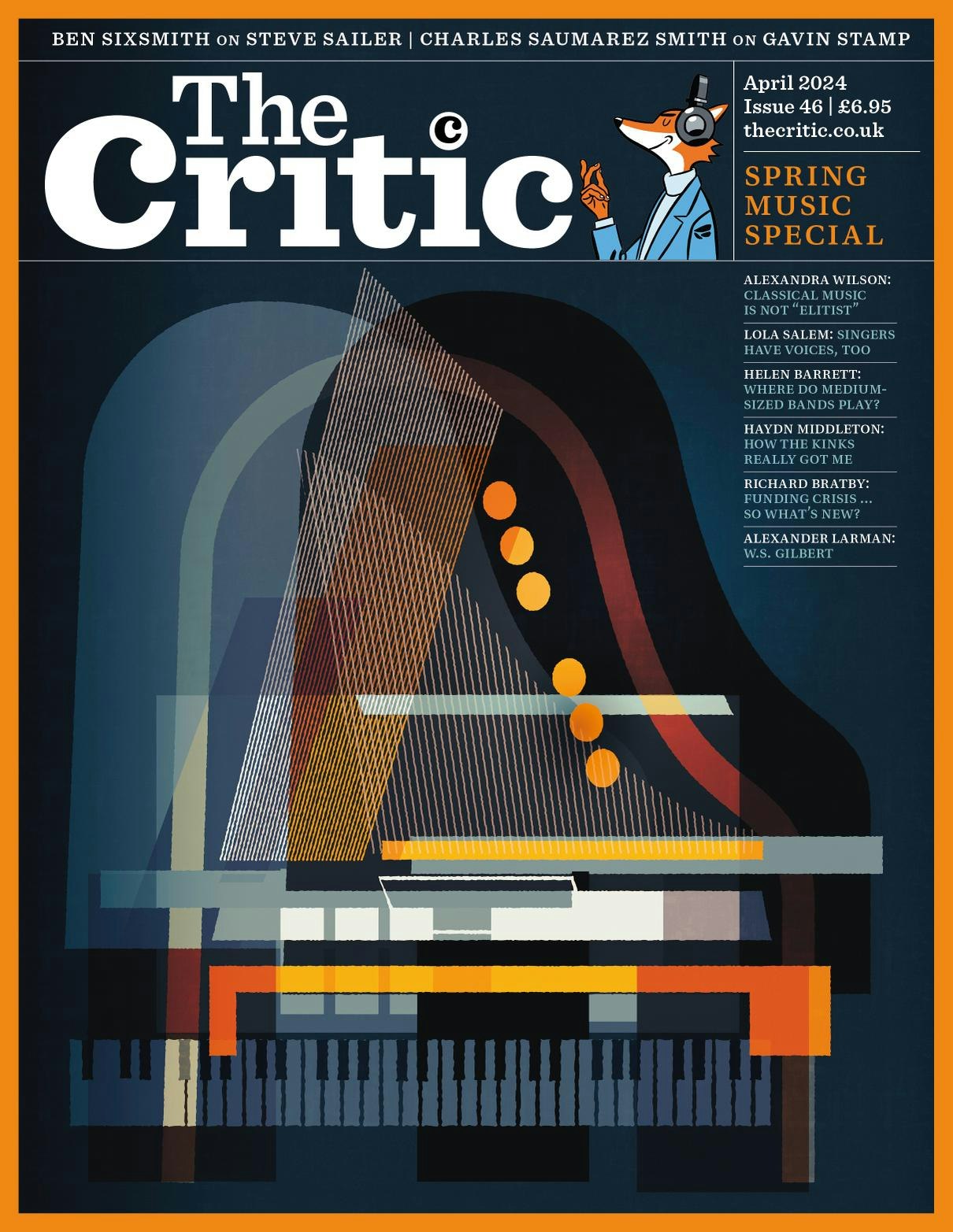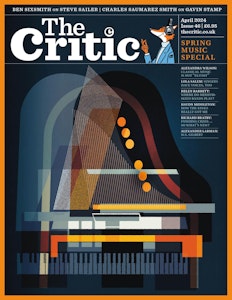Why I’ve embraced Ethiopian spriss culture
A culture of mixing and fusing can serve us well in lockdown and the life beyond
Amid the restrictions of the lockdown I’ve been reminded of some fine Ethiopian wisdom that is instilled in their idea of spriss, the Amharic word for “mix.”
Ethiopians apply the spriss ethos to myriad aspects of life. At its heart is the combining of divergent influences and a type of flexibility in making do with what you have. These attitudes are steeped in this Horn of Africa country sitting at the crossroads of Africa and the Middle East, and its long history as one of the world’s poorest countries. Ethiopia’s spriss mentality holds relevant lessons for all of us during the lockdown, starting at the mundane daily level, when you may not get all you need from your Aldi, Tesco or Waitrose online orders and have to make do with odd-matched ingredients. The spriss outlook also offers broader lessons on how a society can best emerge from the pandemic playing merry havoc with our lives.
A first-time visitor to Ethiopia will most likely initially encounter the spriss phenomenon in the realm of food and drink. If you order a spriss in an Ethiopian café, you will be brought a cup half-filled with tea, half-filled with coffee. It seems a bit odd in theory, but if you are someone like me who appreciates both a cup of tea and a pot of coffee, it starts to make a bit more sense—and it does indeed work. Ask for a spriss in one of the ubiquitous juice shop throughout the capital, Addis Ababa, and you’ll be brought a glass colourfully layered with the freshly squeezed contents of whatever three fruits that happen to be in season: mango, papaya and avocado is a particularly good spriss combo, as is pineapple, banana and orange.
The spriss phenomenon works wonders with booze, where it acts as the Ethiopian mode of cocktail making. Many drinking sessions I had amid Ethiopian friends began with their ordering a bottle of local red wine accompanied by bottles of Coca-Cola, both of which were then poured in equal measure into our wine glasses. An Italian anthropologist I befriended in Addis Ababa was utterly appalled by this mixing of the elixir of the gods with the elixir of commercialisation, but I have always been won over by it. It helps stretch out the wine and your budget over a long night. Ethiopian friends also praise it for its aphrodisiac effect, though this seems a somewhat moot point given the tendency of Ethiopian dive bars to be primarily populated with drunk men leavened by a collection of already enthusiastic prostitutes. The famous “Turbo” local concoction comprises a plastic jug into which is poured a bottle of local white wine, a large bottle of Bedele beer and a bottle of Sprite. Exceedingly affordable and correspondingly lethal.
Ethiopian cuisine is all about the spirit of spriss too. While gradually becoming better known, it’s no overstatement to say Ethiopian cooking remains one of the world’s best-kept and delicious secrets. Eating Ethiopian-style means rethinking many assumptions you might have about dinner-time — for most of us this means starting with eschewing cutlery and being ready to get messy fingers. That’s because the foundation of the vast majority of Ethiopian meals is injera, a giant grey spongey pancake-like bread, upon whose strangely rubbery surface are served a vast array of foods, ranging from multi-coloured mounds of spicy stews to vegetable curries to scrambled eggs to cubes of raw meat. Hands go back and forth scooping up from the various piles of foodstuffs with strips of injera torn from the edges.

One striking food combination that you tend to only find in the most local of joints—it never appeared on menus of Ethiopian restaurants catering to foreigners where it was presumably deemed as too far-fetched or strange—is injera with spaghetti Bolognese heaped into the centre. This is an example of Ethiopians’ willingness to even embrace influences from the country that kept on invading Ethiopia and killing their ancestors across the decades; Italian-style macchiatos are another feature of Addis Ababa life, as are Ethiopians who speak fluent Italian and Amharic, and fly between the Ethiopian capital and Rome, as family lines that dovetailed when Italian soldiers settled with Ethiopian women continue to spriss up the gene pool of both countries. A fork does make an appearance, but only to chop up the pasta into more manageable lengths that are then, as ever, scooped up with strips of injera. A huge mess, but guaranteed to suppress the most ravenous of appetites, especially if hungover after a heavy and disreputable night.
Spriss comes to the fore in Ethiopian music to notable effect thanks to Ethiopia’s long sheltered history. The historian, Edward Gibbon, famously remarked, “encompassed on all sides by the enemies of their religion, the Aethiopians slept near a thousand years, forgetful of the world, by whom they were forgotten.” As developing Ethiopia opened to the world, its musical trends—which already had a significant Arabic melodic bent—ebbed and morphed in response. Following Emperor Haile Selassie’s return from his second world war exile, the bands of Addis Ababa started to experiment with exotic new styles such as jazz, R&B and soul being broadcast from the country’s American military radio station. Now you have local artists such a DJ Rophnan brilliantly blending the country’s unique traditional music styles with the most cutting-edge Western ones such as hip hop and electronic dance music.
Spriss is representative of a suppleness and broadness of thought, including the ability to hold two contradictory ideas in your head at the same time
At the more theoretical level, spriss is representative of a suppleness and broadness of thought, including the ability to hold two contradictory ideas in your head at the same time. In the Ethiopian context, I’ve always felt this finds its best illustration by the reported fact that one of the busiest times for the Addis Ababa prostitutes is immediately before and after Lent: Ethiopian Orthodox Christians take Lent’s fasting strictures very seriously, and beyond the reduction of food for 55 days, many Ethiopian Orthodox Christians give up sex. While this pious and far less pious combination might seem hypocritical, such apparently incongruous contradictions are the stuff of human existence and survival. It’s the primary way humans get by: we get out of the bed in the morning and make something of our days even though we know we will one day have to die rendering all our previous efforts far less important than they appeared at the time.
The standard bearer for how life is full of these sorts of paradoxes was G.K. Chesterton, whose writings dealt with how these apparent contradictions and incongruous juxtapositions point to deeper truths. In a notable passage in his book Orthodoxy he illustrates why freedom is not found in the absence of restrictions.
“We might fancy some children playing on the flat grassy top of some tall island in the sea,” Chesterton wrote. “So long as there was a wall round the cliff’s edge they could fling themselves into every frantic game and make the place the noisiest of nurseries. But the walls were broken down, leaving the naked peril of the precipice. They did not fall over; but when their friends returned to them they were all huddled in terror in the centre of the island; and their song had ceased.
Similarly, he describes how courage “is almost a contradiction in terms,” explaining, “it means a strong desire to live taking the form of a readiness to die. ‘He that will lose his life, the same shall save it,’ is not a piece of mysticism for saints and heroes. It is a piece of everyday advice for sailors or mountaineers. It might be printed in an Alpine guide or a drill book. This paradox is the whole principle of courage; even of quite earthly or brutal courage.”
I’ll hazard that this contradictory alchemy that motivates the hero, who Chesterton says “dies for the sake of living,” is what helps motivates many NHS workers during the Covid-19 outbreak, and motivated those who embraced it all the way to the point they lost their lives for it.
The mental suppleness and agility inherent in spriss includes the embracing and synchronisation of old and new, the meshing of Ethiopian and Western styles and values. No one way is best, according to spriss, rather it is far better to combine the best bits of different worlds. Such a tactic will surely serve us well as we try to move on after the pandemic and to counterbalance and make sense of all the topsy-turvy upheavals we are left with. Already, amid all the tragedy and loss occurring, there are discussions of how we may emerge as better people for our pandemic experience, with a restored sense of the importance of family and community.
A recent YouGov survey commissioned by the Food, Farming and Countryside Commission (FFCC) and the Food Foundation charity found that a clear majority of Brits—85 percent—want to see at least some of the personal or social changes they have experienced continue afterwards, while just 9 percent want a full return to how things were before. Forty per cent said they felt a stronger sense of community in their local area since the virus shut down “normal” life, while 39 percent said they had been more in touch with friends and family. Fifty-one percent of respondents said they had noticed cleaner air, and 27 percent said they had recognised more wildlife since the lockdown began.
While such appreciations are heartening, I don’t think they will ever go as far as constituting a groundswell of opinion to return to a pre-industrialised agrarian society. Far better and more realistic, then, to emerge from the pandemic by, spriss-like, combining the lessons and fundamental precepts of old that many of us are rediscovering through the lockdown, with the technological advantages we have at our disposal and which we need to bring to bear to kickstart our economies, transport infrastructures and everything else that help us to live meaningful lives while engaging with society and the wider world in the 21st century. Like many, I am relishing the emboldened wildlife, but I still want to breath my last knowing that our descendants will stand a chance of pushing out into the stars and exploring inter-galactic mysteries. Perhaps one day spriss culture may involve some truly alien influences. Either way, let’s get mixing and moving on.
Enjoying The Critic online? It's even better in print
Try five issues of Britain’s newest magazine for £10
Subscribe














